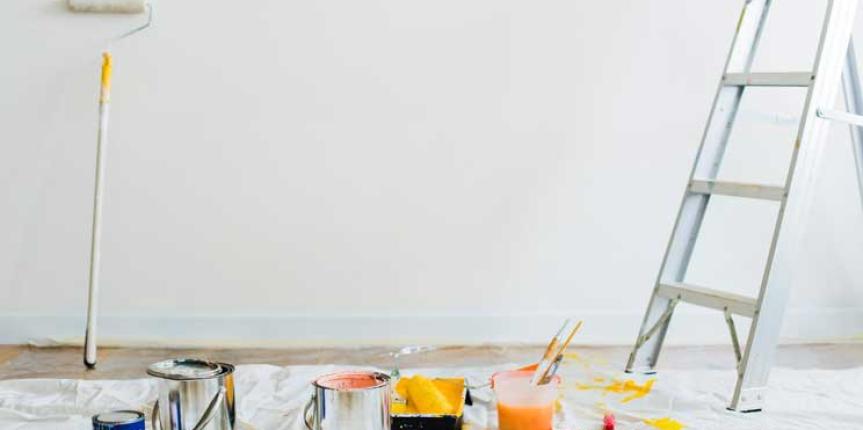
Before starting any of your painting jobs never skip the preparation time required to clean your walls, scraping off cracks and applying the painter’s tape. Painting is one of the most important ways to make your home more beautiful. It is one of the most common ways to make your home interior design more beautiful than before.
Some Common Painting Mistakes and their Rectification Techniques
The most common painting mistakes and their rectification techniques are as under:
1- Painting a Stained Surface
- Painting dirty walls are the most common mistake. Always wash the ceilings and walls before painting.
- Dust particles interfere with the best results so always paint on a clean surface.
2– Applying Paint to an Unprepared Surface
- Before painting, remove the peeling and flaking old paint.
- Scrape the glossy surface before putting a new coat of paint, or it won’t stick well and provide the best coverage.
3- To Paint the Ceiling at the End
- If both the ceiling and walls are being painted, always wash the roof first.
- If the walls are painted earlier than the ceiling, then the drops of paint from the ceiling might spoil your newly painted walls.
4- Leaving Fixtures Exposed by not Taping
- Always remember to put tape around the windowsills, doorframes before painting.
- Cover the doorknobs and light fixtures, or they might be splotched.
5- To Paint a wet surface
- Before applying paint, it’s essential that the surface is dry. Allow the walls to get thoroughly dry after washing.
- Painting on a wet surface causes peeling and blistering of the paint.
6- Use of Wrong Tools
- Selection of correct painting tools proves to be very rewarding in the long run.
- It’s important to buy the best type of paintbrush according to the surface you’re painting and the kind of paint you’re using.
7- Finishing the Color
- Touch-ups become necessary to give the finishing touch to your interiors at the final stage.
- Always save some extra paint after painting your walls for touching-up at the end.
8- Not Using Primer
- Use of primer becomes especially important when the wall is stained or when you are painting over a different, darker color.
- Primer gives a prime coat to the surface and improves the look of the fresh color.
9- Dipping the brush deep into the paint
- Always dip one-third of the brush into the paint. This prevents wastage of the paint and makes the cleaning of the brush much more comfortable.
10- Selecting the wrong color
- Walls, ceilings, doors, bathrooms, and kitchens all require different types of color and sheen.
